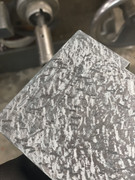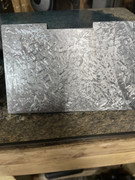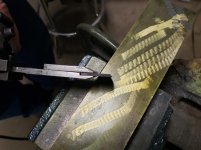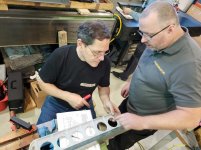I'd look at your scraping from two perspectives: What are you scraping, and How are you scraping.
What are you scraping has to do with getting the right geometry in your cutter and scraping implement for the kind of material, and knowing "where" to scrape. Where to scrape involves a lot of measuring, printing, and general detective work to determine how far to go to reach the desired precision. If you are trying to make something flat, then you need to be able to measure your progress. You also need to know what it's flatness refers to. Is it flat to the part, to the machine or assembly it mounts to, or will it stay flat when in use?
How to scrape has to do with how to work efficiently and how attractive the results are. Bear in mind though that you can make something look really pretty scraping, but if you're not measuring what you're doing then it can have no effect on making a machine or other surface actually work, or even make it worse.
I'd recommend learning to work in 'lines' rather than moving around at random. It helps to be able to see what is going on as the light hits scrape marks differently at different angles. Use a sharpie and a ruler to lay out a grid at 45 to the work and follow the lines as you scrape. Once you get a feel for it you won't need the lines and you can use the previous scraping marks as a guide for the next pass.
Scraping steel is tricky, but it also isn't as common. I'd recommend starting with a piece of iron as it's easier to do and much more common in application as most scraping jobs involve refinishing or improving castings. You can find a used or imported angle block or small iron surface plate for cheap to learn on and end up with a usable tool when you are done.
 [/url]
[/url]











